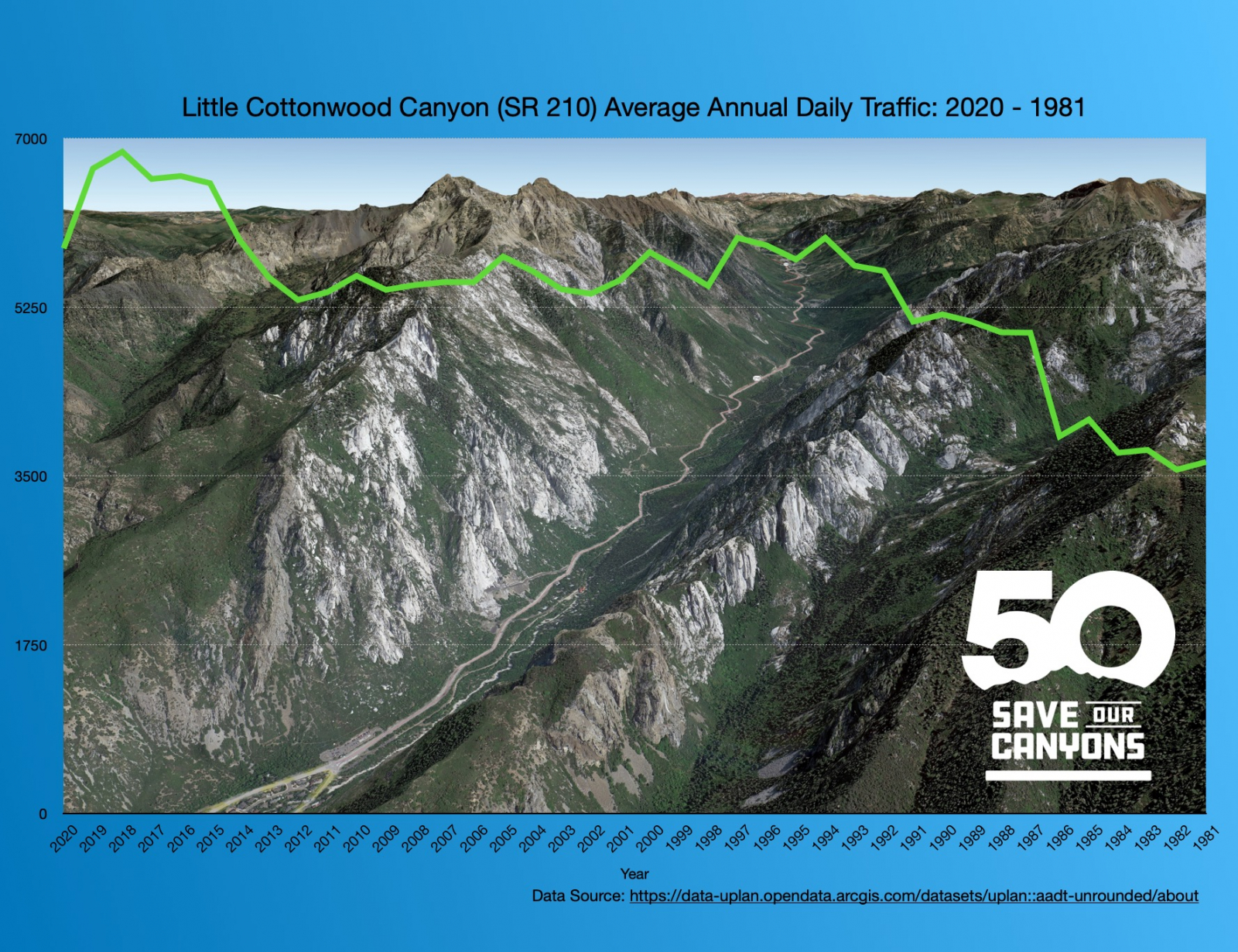As we are continually facing population growth in the Salt Lake City valley, it is important to remember that this is an upward trend and the Central Wasatch is feeling the pressure. Our canyons are seeing visitation levels like never before (reference graphs). The traffic issues we have seen for decades in Little Cottonwood Canyon are no longer simply isolated there. The congestion we experience year-round of idling cars, abysmal public transportation opportunities, and vehicles not following traction laws in the winter is happening in Little Cottonwood, Big Cottonwood, and Millcreek.
With the proposed gondola now selected as the Utah Department of Transportations preferred alternative to “solve” the mobility issues in Little Cottonwood Canyon - there are some very key points to keep in mind.
- The proposed gondola is estimated to improve mobility by 30%. That is it.
- Parking for the gondola does not exist yet which means more parking lots will need to be developed at the mouth of Little Cottonwood Canyon just to serve patrons.
- The gondola runs only in the winter… we experience these issues year-round.
- The gondola is fully funded by taxpayers meaning that the majority of the state that does not ski at the private ski resorts in Little Cottonwood will be required to contribute to this project.
- The gondola is STATIC. Once built, it is what it is. A gondola system cannot evolve with a growing population. Common sense solutions can. Busing, affordable tolling during peak visitation periods, establishing transportation hubs, and so on. These solutions can also scale back if visitation was to ever lessen. With a population that is destined to continue growing, how will a gondola system that only serves TWO locations - Alta and Snowbird - cater to the transportation needs of the valley?
The graphs below are great demonstrations of the sustained, increased visitation that Big Cottonwood Canyon and Little Cottonwood Canyon have experienced from 2020 to 1981. Visitation in both canyons has skyrocketed in the last 8 years which is a trend that runs parallel to the population growth in Salt Lake City. We need to create proactive, long-term transportation solutions and regulations that are a proper match to the pressures both the Central Wasatch and Wasatch Mountains face.



